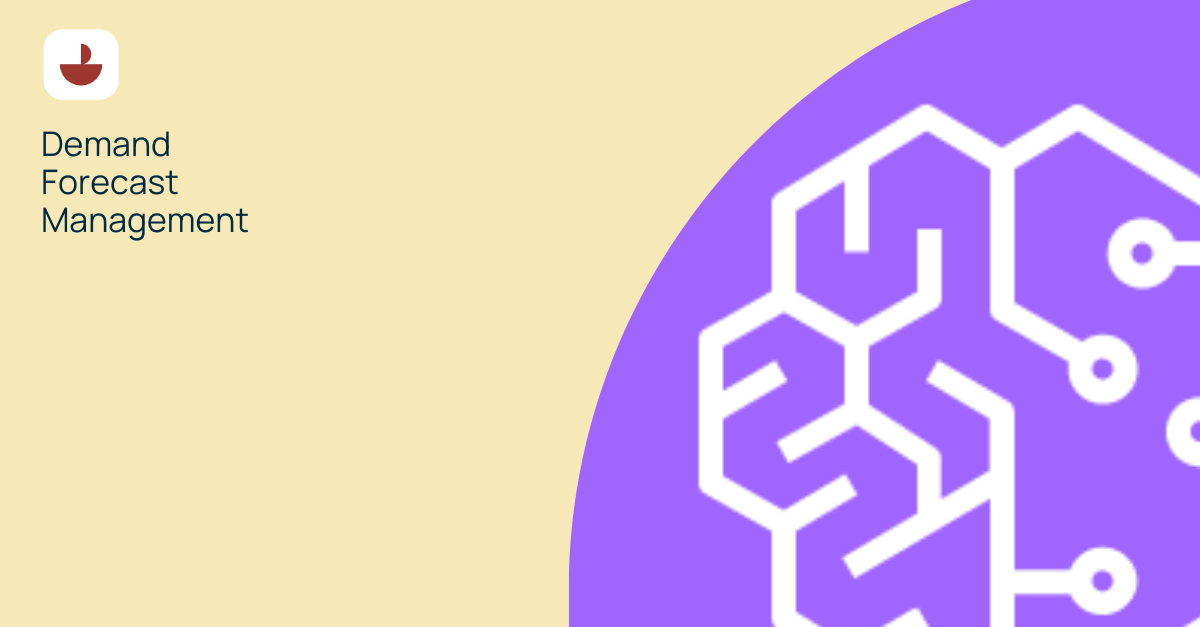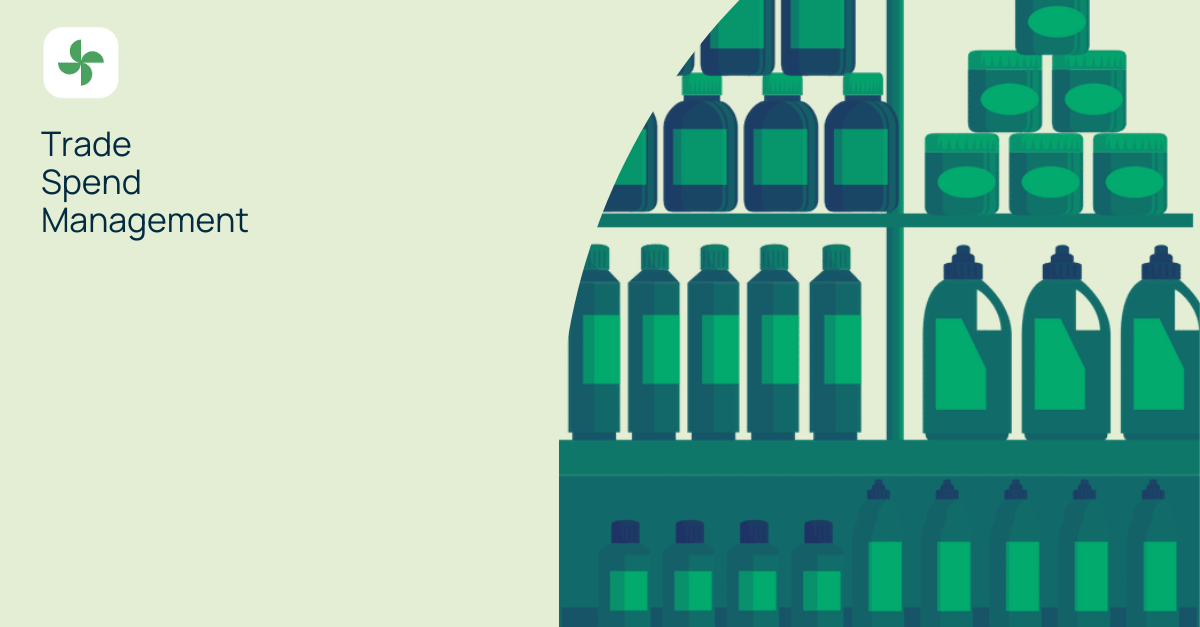
What is demand forecasting in CPG?
We all want to know what the future is going to bring. But for Consumer Packaged Goods (CPG) manufacturers, preparing for the future can be an existential challenge.
Companies need to ensure that they manufacture enough product, but not too much, and that stock is shipped to the right place, at the right time. Meanwhile, account managers and marketeers will have planned their strategies with the demand forecast in mind.
All of this feeds into the ultimate goal of ensuring satisfaction both for retail partners and for the end customer.
Get this wrong, and the future of specific products can be cast into doubt or carefully nurtured relationships with retail partners seriously undermined.
Demand forecasting is clearly critical. So, how are you supposed to do this?
Some might rely on a hunch or gut feel, vaguely based on past experience. Others might sketch out a number of scenarios, and hope that the best case is the one that comes true. Others still will have developed bespoke modelling tools which work up to a point, but are clunky and don’t capture all the data they could.
None of these approaches are good enough. To really succeed in making customers, partners, and your own stakeholders happy, you need to actively assess future demand, considering all the relevant internal and external factors, to develop a well-grounded demand forecast. And you need to be able to update your forecast as new information comes to light.
The challenges CPG firms face in demand forecasting
But none of this is easy. CPG supply chains are incredibly complex, stretching from the manufacturer itself, through distributors, wholesalers, and to retailers. Each can have different objectives, each sees the world through a slightly different lens, and each generates and relies on different data.
Even a relatively small consumer packaged goods player can have a wide range of products, once different sizes and packaging are taken into account. Larger players can have hundreds or thousands of different SKUs.
All these categories are subject to seasonality and trends, to a greater or lesser degree. Sometimes the impact is relatively straightforward – sunscreen and ice cream in summer, cold medicines and soup in winter. Others might be much harder to unpick.
Moreover, external events can play havoc with even the most reasonable assumptions. Weather can be unpredictable. A sporting event or state occasion can boost certain product categories temporarily. A natural disaster or geopolitical unrest can cause shortages or price rises on key commodities.
This all means there can be a dizzying range of information and data that demand forecasters could potentially draw on. But this may be in different formats, spread across multiple silos, right through the supply chain. And some crucial data might come in the form of third party or syndicated data, direct from EPOS systems.
It can be a technical challenge just to pull all this information altogether. Companies then face the problem of generating reliable insights and forecasts from this mass of data. And, even then, different teams might need very different insights given their respective objectives.

Common demand forecasting mistakes to avoid
CPG manufacturers and their retail partners can struggle then to work out what is happening right now, never mind what they should prepare for a year, or even a quarter from now.
In the face of these challenges, we can see some common mistakes repeated time and time again.
One of these is an over-reliance on historical data when planning. What has happened in the past is, of course, the starting point for forecasting the future. But historical data doesn’t account for changes that have happened since, whether that’s new products, changing consumer behaviour, or the myriad of external factors that can affect the market.
Likewise, seasonality and trends can have a big impact on demand. Forecasters must be alert to how these factors might have influenced previous data – unexpectedly cold weather the previous June, a once every four years sporting event – as well as how they might shape the year ahead. Simply looking at last year’s factory data doesn’t give you insight into all these nuances and can fatally undermine forecasts.
It’s also easy to forget the positive impact of promotions and marketing. Was that earlier spike in demand for ice cream due to unseasonably warm weather? Or was it down to an unusually effective promotion? What does your marketing team have in the pipeline over the next year, and how might it affect demand?
Forecasters can also fail to deliver the right level of detail, depending on who they’re producing forecasts for – and when they are needed. As we’ve seen, different teams will need very different levels of information. And that has time implications. An “overall” demand figure targeted at factory planners might take less time to generate. But it can leave sales teams and marketers in the dark on the granular data that should be underpinning their planning and negotiations with retail partners.
Often different teams will simply evolve their own forecasting tools targeted at their specific needs. Typically, this will mean a series of spreadsheets into which they’ll cut and paste whatever data they can obtain. But this is laborious, manual work, which often means mistakes, and which can result in different teams developing very different views of the future – and the present. At the same time, the “official” forecast might exist within a legacy system, exacerbating the danger of mistakes if data is copied back, or resulting in the proliferation of multiple shadow forecasts.
This illustrates the broader challenge of ensuring that all the relevant stakeholders within the organization and right through the supply chain are communicating, both to generate forecasts, and to act accordingly.
So how can CPG firms gain clarity and reliability when they’re forecasting future demand?

How a demand forecasting platform can benefit you?
As we’ve seen, different teams within the organization and in the supply chain, have different needs when it comes to developing forecasts. At the same time, they are trying to grasp the same reality, albeit from different angles.
This can be a starting point in considering why CPG companies can benefit by using a demand forecasting platform.
The right platform will help you pull together disparate sources of data that can give you an overview of the whole supply chain, including retailer data, and third party and syndicated data.
This will allow all interested parties to see the complete picture, even if they are viewing it from different perspectives. And because these workflows can be automated, the potential for error is reduced, along with the time wasted pulling together data sources or cutting and pasting information into spreadsheets.
Likewise, processes such as product switching can be automated, reducing confusion, enabling inventory to be optimized in the short term, and producing better forecasts in the long term.
A truly cutting-edge platform will apply advanced AI and machine learning tools to all that data to deliver better insights into historical data and produce more accurate and actionable forecasts about the future.
And because of the “single source of truth” nature of modern platforms, and the automated integration and workflows they enable, changes by one team can be reflected immediately throughout your organization. That might be the impact of new data or information from factories or retail partners. Or it could be third party information, such as consumer trends data or weather events, that can dramatically change forecasts.
These updated forecasts can then be used to optimize or reconfigure other groups’ activities, whether it’s optimizing factory output or inventory levels, or adjusting promotional activity.
All of this will allow you to reduce costs as waste is squeezed out and inventory is optimized, while delivering a competitive advantage as marketing and promotion become more focused. The result is enhanced collaboration within your organization and with retail partners, and, ultimately, increased customer satisfaction.
What AI means for demand forecasting in CPG?
Historically, forecasting was as much art as science. Even if demand forecasting professionals could pull together both historical and real time data, they might not have had adequate tools, or the time, to properly analyse it.
AI and machine learning have completely changed this. The best systems will employ industrial strength algorithms that are tuned to the needs of CPG vendors and their retail partners.
Such systems can then work on data from historical information and highly structured ex-factory data to real-time data such as weather forecasts and even unstructured information such as news or social media posts. .
This means forecasting professionals can begin to produce accurate, focused forecasts, which can be sliced and diced according to the different needs of their colleagues. Overall figures for the manufacturing side, highly granular for the trade promotion team, down to individual SKUs.
And this can be automated, eliminating the potential errors inherent in manual processes, and allowing changes made by a demand planner to be reflected throughout the organisation immediately. Thus, other teams, such as sales or marketing, can see their impact in real time , and are able to respond to changes much more quickly.
The result is that forecasting teams and their colleagues in manufacturing or marketing, can take an exception-based approach to their work, applying their expertise to the outliers, the unexpected, and the trickiest problems.
The future of demand forecasting in CPG
As we’ve seen, AI and machine learning are transforming the possibilities of demand forecasting.
But producing a forecast is not a one-off exercise. Data is changing and evolving all the time, whether it’s third party or syndicated information or the data emerging direct from CPG vendor’s supply chains. This can lead to constantly optimized forecasting – for those teams that have the appropriate tooling.
Other technology trends will contribute to changes in demand forecasting. The same increased interconnectivity and automation that allows data to be pooled and analysed more easily should make sharing insights automatically much easier.
And these insights should be tailored to the specific needs of different teams, whether that is a focus on supply chains, granularity to help marketeers plan better campaigns for different retailers, or highlighting financial metrics for the CFO’s office.
Better visualization tools will make it easier for teams to draw inferences from complex data and focus on the key elements relevant to their roles.
As each team models the data and refines their forecasts, the effects can be replicated instantly across the organization, ensuring they are all pulling together in the same direction.
Society’s increased focus on sustainability makes this more important than ever. Ever more refined forecasting, and better integrated systems, will mean manufacturers can address inefficiencies that result in wasted goods or sub-optimal distribution. Producers will be in a better position to address sustainability issues, both within their own business and in addressing consumer concerns.
This will reshape how teams work with each other, and how manufacturers work with retailers and ultimately, end customers.
Visualfabriq Demand Forecast Master
Visualfabriq’s Demand Forecast Master platform enables you to easily pull together historical, ex-factory and syndicated data.
This provides the fuel for its advanced AI models to automatically generate statistical baselines, break out trends, and create well-founded, accurate forecasts of future demand.
These can be pushed to your organizations’ demand planning and supply chain planning teams with confidence. Because the statistical baselines are created bottom up, your teams can get forecasts for each plan account or product, taking into account planned promotions, likely risks, and potential opportunities.
This will be even easier with Visualfabriq’s Trade Spend Master and Trade Promotion Master tools. Each team can dive down to the right level of detail they need, comparing forecasts and actuals, and modelling or optimizing plans, while being confident they are all dealing with a single source of truth.
And with Visualfabriq’s Revenue Planning Platform, demand forecasts can be monetized to a full year value plan, showing how volume plans contribute to business goals.
You can never eliminate the unexpected completely. But with Demand Forecast Master, we can safely predict you will spend more time focusing on the exceptions and outliers, while meetings will generate more answers than questions.
What next?
Demand forecasting is always complex. Simply producing a well-grounded forecast is a challenge. But information changes all the time, meaning forecasts can potentially be out of date almost as soon as they are drafted.
Legacy systems can make it hard or impossible to pull together accurate or up to the minute data in the first place. Distributing forecasts may be difficult and updating or optimizing forecasts an impossibility.
This lack of connectivity and agility means a firm might default to a lowest common denominator forecast, which lacks the detail for specialist teams to do their job optimally. This leads to inefficiency, or even different teams working up their own visions of what the future might be.
But your future needn’t look like that. With the right demand forecasting platform, you can pull together both historical and up to-the-minute data, constantly. Together with cutting edge AI, this can give you accurate and dynamic forecasts which you can tailor to the needs of your individual teams.
This will save them time and means they can focus on the exceptions they can bring most value to. Changes and optimizations will be reflected instantly, meaning all your teams are working with the most up to date information.
Your entire organization will be able to work on a single version of the truth. Even if it hasn’t actually happened yet.
To see how your organization can benefit from an integrated, AI-powered demand forecasting platform head here. Today.


